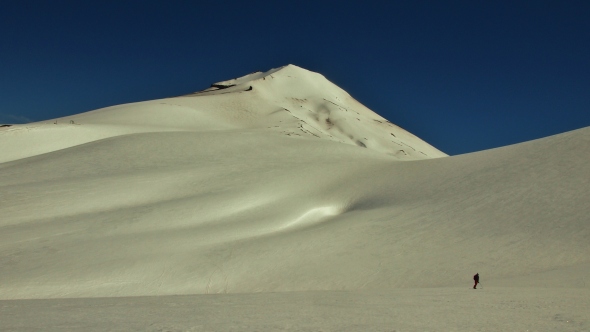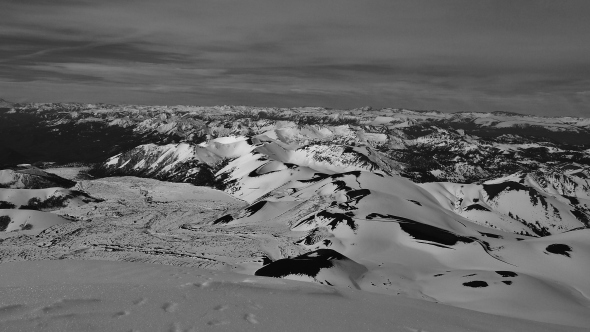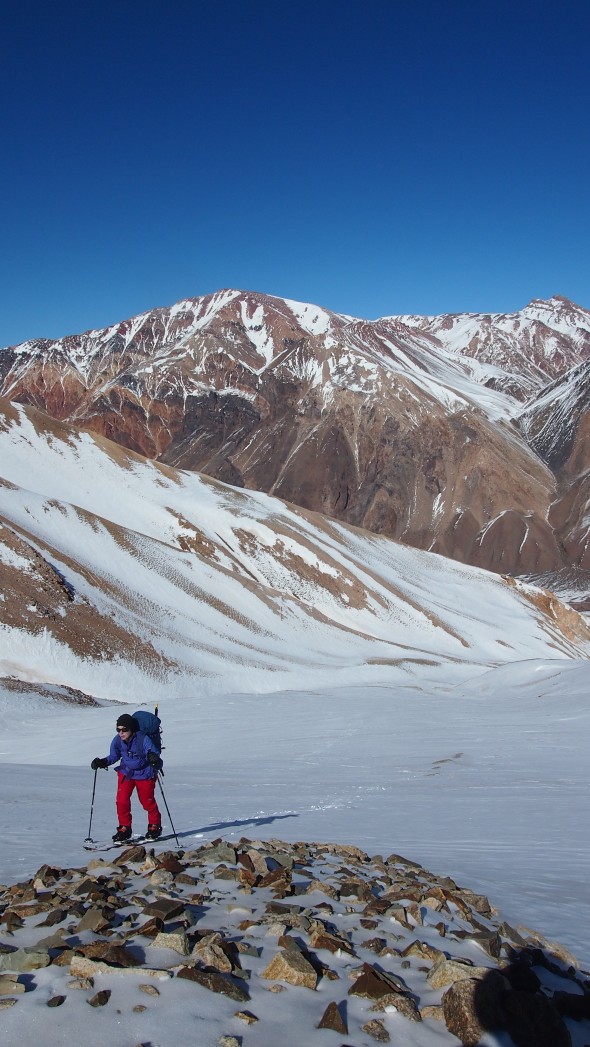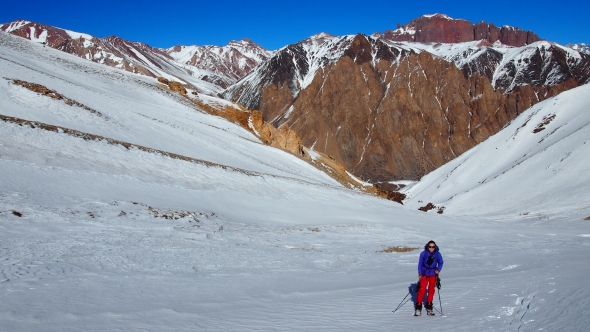At 2865m volcano Lonquimay in Chile is a decent height volcano to ski or snowboard. It is considered an easier climb in the summer, but it certainly felt a fairly good achievement on a split board in winter via the steeper route we took. It last erupted in 1990 starting on Christmas day 1988, I tried to block out this farily recent eruption and the associated fatalities that resulted, as we plodded up it’s steady steep slopes. The huge lava flows and associated craters from that Christmas in 1990 were visibly behind us slowly getting smaller as we climbed.
The ascent ridge is exposed near the top and pretty steep so it is not all straightforward. However the approach is stunning, from Temuco you drive through National Park Malalcahuello with >monkey puzzle tree forests on a jet black road of volcanic gravel. As the snow starts the trees are silhouetted against the imposing volcano rising up above the few ski lifts. The ski resort is called the Corralco-Lonquimay resort, it is pretty flat but the location is probably the most unique you will ever ski so who cares about it being 100% cruisey blues! 
We quickly skinned above the lifts and started on the volcano slopes. We passed an old lift base before finding the ascent ridge clearly visible to left in above picture. This is much wider and generally better than it looks however the wind had picked up and was making progress hard. The ski group ahead of use bottled it and skied back down, we progressed, but it involved crawling along.  We finally traversed around the cone and started from the other side, it was steeper but no wind. The snow was perfect for boot packing steps up the 35 degree slope. It was exhausting work but finally we crested the icy crater rim. Collapsed in a heap we admired the view, volcanic cones dotted across the horizon and the plains down to the Pacific Ocean in the west.
We finally traversed around the cone and started from the other side, it was steeper but no wind. The snow was perfect for boot packing steps up the 35 degree slope. It was exhausting work but finally we crested the icy crater rim. Collapsed in a heap we admired the view, volcanic cones dotted across the horizon and the plains down to the Pacific Ocean in the west. 
Crater Navidad, and associated lave flows were clearly visible down the slope as per the picture below. The sheer scale of the lava flows and mounds of lava show the scale of the last eruption. Navidad being named after the christmas eruption on 25th December 1988. The landscape really is unique and spectacular. It may look close but it was a long way down, over 1000m of 30 to 35 degree slopes.
The views across to the other local volcanoes such as Llaima, Villarica and Lanin to the south. All future targets to ski tour!
The ski down was steep but the snow had softened and made a fun ride, with the vastness of the descent it felt you would be down in no time but the steep slope just keeps on going. We cut over to the resort lower down and straight lined the entire resort to carry momentum to the car park. We sat and admired the sun go down after a great day on the volcano. It hadn’t erupted which was a bonus too!





















